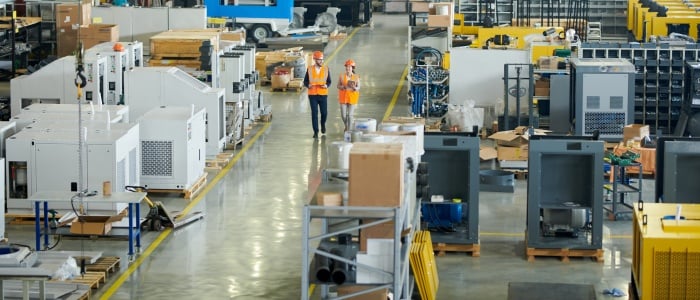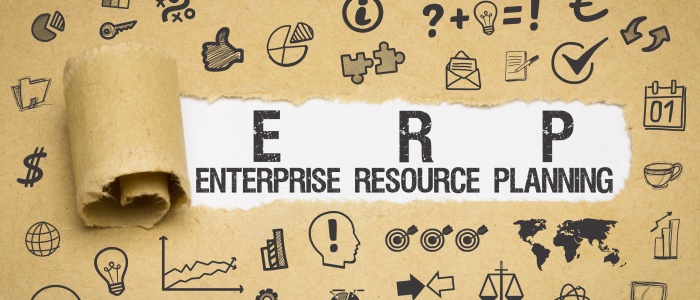Maximizing capacity
For many reasons, you get a direct return on investment when maximizing your current manufacturing capacity. Capacity planning and production scheduling are prime areas where we help our manufacturing customers. Improving the use of available capacity often transcends ERP software, as having the proper infrastructure in place ensures proper measurements can be taken, and accurate data collected—and that there is a mechanism to balance manufacturing throughput in its truest form.
Once you can accurately measure your true capacity and trust your capacity utilization measurements, you have the foundation to maximize the benefits of manufacturing capacity planning. One of our Infor ERP customers’ biggest goals is to grow their business without adding more overhead, whether that’s adding people, resources, overtime, or additional shifts. Obviously, a well-implemented ERP application can provide process efficiencies, but measurable return on investment is gained by getting more production without increasing costs. That’s the juice.
The payback for improving manufacturing capacity planning and production scheduling can be immense, even if you are only increasing usable capacity in single percentage points. Improving capacity can be an easy win for your organization.
How to calculate manufacturing capacity
To properly calculate your capacity, you need to measure cycle times and run rates for your production resources, as well as have secondary efficiency times for alternate resources. Calculate set up times and transfer times. Get average operator run times as well, where applicable. Calculate variable shift times, and planned and unplanned maintenance, to have an accurate picture of your available uptime.
What else should be considered with capacity management?
Understanding your capacity is great, but it is imperative that you be able to use that available capacity. What’s often overlooked in software schedulers, or even homegrown scheduling worksheets and programs, is that if material availability doesn’t coincide with manufacturing resource availability, then you have not solved the riddle. Additionally, you need to be able to forecast your outside processors delivery date accurately. In some industries, you may even need to account for ancillary activities or services, such as bringing an x-ray machine onsite. Finally, you need to have what we call “concurrent resources,” where a specific skilled or certified operator is required to perform a task with a specific resource.
Related: Build a Sound Process for Manufacturing Capacity Planning
Related: Managing Capacity Because It's What You Sell
How to make optimum use of capacity planning
You’re on your way to creating an industry-best process of capacity planning, if you have identified your resources, measured varying process and cycle times, identified material lead times by preferred and secondary vendors, established planning policies for the parts ensuring material availability, defined transfer and delivery times for outside process, and identified concurrent resource needs. You now have the foundation for the engineering master component of the capacity planning.
It is critical that your engineering masters are accurate and well-maintained. Traditionally, one of the first areas our team examines are the engineering masters. In fact, we are currently working with a company that wants to schedule better in order to improve their on-time delivery. One of this company’s issues is they don’t have all the materials on the Bill of Material component of the engineering master. Whether you always try to keep those materials in stock or not, you want to ensure you have the proper foundation in place as a matter of discipline and accuracy.
Other things to consider for material planning is to make sure you have accurate planning policies that will drive the best methods of having proper inventory levels, managing your vendors, and measuring performance to ensure you have on-time deliveries. The best planning policies help produce finished goods as manufacturing capacity allows, versus being dependent on material availability.
Make sure all resources are properly identified. Include set-up time, run rates, and shift availability. You might also want to have alternate resource efficiencies defined. And, in some instances, you may want to set up resource groups that can be valuable tools once you begin production scheduling.
One thing we haven’t yet addressed is that you need to define your shift structures. The days of facilities only running five days a weeks and eight hours a day are long over. Obviously, the shift times drive your capacity per hour availability. Define your varying shifts, available resources on those shifts, and don’t forget that you may need specific operators available in order to realize the potential capacity.
Please visit How to Structure Your Manufacturing Capacity Planning to Work in Any Software for more information about building an effective capacity planning infrastructure.
Production scheduling and capacity planning in manufacturing
You can start running scheduling and managing your capacity now that you have defined and set up the varying requirements needed by your ERP system. The system should be able to digest the varying forms of demand and produce a schedule, planned work orders, and purchase orders needed to meet the inventory levels in a make-to-stock environment, as well as finished goods pinged to a specific customer order in a make-to-order environment.
As you start to release work orders, issue materials to those jobs, and collect labor on those jobs, you hope to see that your actuals are in alignment with your standards or estimates. The actuals need to be monitored and tracked—it is essential to ensure these are accurate to maximize capacity. For example, if you have a standard run rate on a resource of 60 minutes for an operation, and you find that your actuals are showing it only takes 45 minutes, then your ERP system should be able to show you that you have a 25% positive variance on labor costs and time for that operation. A positive variance is not always a good thing, as this simply lets us know that we could get more product through this resource. To reduce the variance, we need to update the run time on this operation on the engineering master; otherwise, the ERP system schedule will continue to do as told.
The lesson is it’s imperative to track real-time labor time if you want to maximize capacity. Otherwise, you are guessing. Plus, with real-time labor you get accurate costing, have real-time visibility into work-in-process on the plant floor, are relieving the schedule as work is completed, and can evaluate your standards and optimize them based on factual data.
You should be able to see varying reports and manufacturing capacity analysis in your ERP system. For example, Infor ERP solutions, such as CloudSuite Industrial/SyteLine and VISUAL ERP reports include:
- Utilization – Visualizations show utilization for specific resources in varying time parameters. You can quickly identify the most-used resources, and jobs going through those resources. It can be seen where you need to add overtime or another shift to a resource, possibly add resources, or investigate if there are changes that can be made to improve usage of that resource.
- Constraints – Visualizations show resources that are causing the most bottlenecks, or where demand for a resource far outweighs its ability to process required throughput.
- Jobs Late – Visualizations and data show jobs that are forecasted to be late, as well as issues causing that delay, whether it be capacity constraints or material/outside processes constraints.
- Efficiencies – Visualizations and reports show operator efficiency for hitting defined standards. Once again, you need to do real-time labor tracking to have this information. The efficiency scores may indicate operator issues, but generally give insight that there is a problem. You may need operators who consistently hit expected efficiencies to work with those who don’t. Or maybe more training or an operator change is needed. Regardless of the specific issue, if your operators are not near expected goals, you are losing the opportunity to achieve optimum capacity usage.
Summary
Capacity maximization should be a goal of any manufacturer. Accomplishing this goal requires proper infrastructure, real-time data collection, and a means to see your ongoing performance. You also need an ERP application that schedules properly.
Visual South is renowned for helping companies perform better manufacturing capacity planning and scheduling. A great way to start of the process is with our Scheduling Workshop, or you can simply reach out and have a free 30-minute consultation.









